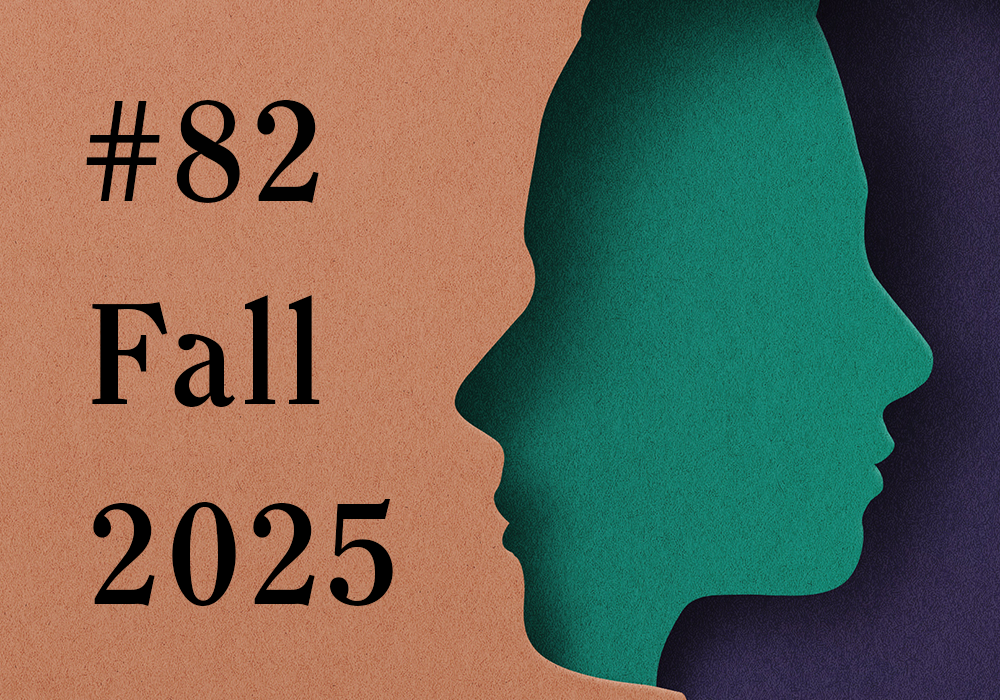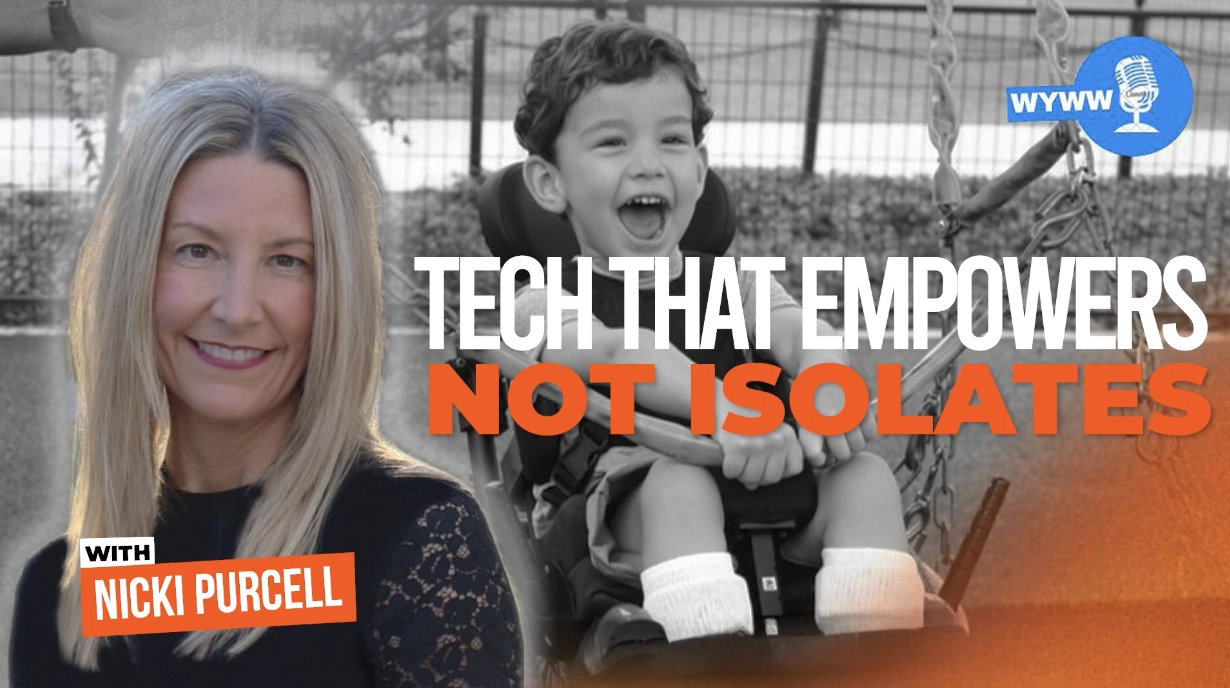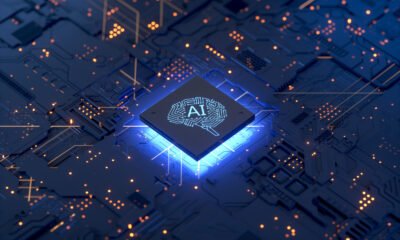Ethics & Policy
Formulating An Artificial General Intelligence Ethics Checklist For The Upcoming Rise Of Advanced AI

While devising artificial general intelligence (AGI), AI developers will increasingly consult an AGI Ethics checklist.
getty
In today’s column, I address a topic that hasn’t yet gotten the attention it rightfully deserves. The matter entails focusing on the advancement of AI to become artificial general intelligence (AGI), along with encompassing suitable AGI Ethics mindsets and practices during and once we arrive at AGI. You see, there are already plenty of AI ethics guidelines for conventional AI, but few that are attuned to the envisioned semblance of AGI.
I offer a strawman version of an AGI Ethics Checklist to get the ball rolling.
Let’s talk about it.
This analysis of an innovative AI breakthrough is part of my ongoing Forbes column coverage on the latest in AI, including identifying and explaining various impactful AI complexities (see the link here).
Heading Toward AGI And ASI
First, some fundamentals are required to set the stage for this discussion.
There is a great deal of research going on to further advance AI. The general goal is to either reach artificial general intelligence (AGI) or maybe even the outstretched possibility of achieving artificial superintelligence (ASI).
AGI is AI that is considered on par with human intellect and can seemingly match our intelligence. ASI is AI that has gone beyond human intellect and would be superior in many if not all feasible ways. The idea is that ASI would be able to run circles around humans by outthinking us at every turn. For more details on the nature of conventional AI versus AGI and ASI, see my analysis at the link here.
We have not yet attained AGI.
In fact, it is unknown as to whether we will reach AGI, or that maybe AGI will be achievable in decades or perhaps centuries from now. The AGI attainment dates that are floating around are wildly varying and wildly unsubstantiated by any credible evidence or ironclad logic. ASI is even more beyond the pale when it comes to where we are currently with conventional AI.
Doomers Versus Accelerators
AI insiders are generally divided into two major camps right now about the impacts of reaching AGI or ASI. One camp consists of the AI doomers. They are predicting that AGI or ASI will seek to wipe out humanity. Some refer to this as “P(doom),” which means the probability of doom, or that AI zonks us entirely, also known as the existential risk of AI (i.e., x-risk).
The other camp entails the upbeat AI accelerationists.
They tend to contend that advanced AI, namely AGI or ASI, is going to solve humanity’s problems. Cure cancer, yes indeed. Overcome world hunger, absolutely. We will see immense economic gains, liberating people from the drudgery of daily toils. AI will work hand-in-hand with humans. This benevolent AI is not going to usurp humanity. AI of this kind will be the last invention humans have ever made, but that’s good in the sense that AI will invent things we never could have envisioned.
No one can say for sure which camp is right, and which one is wrong. This is yet another polarizing aspect of our contemporary times.
For my in-depth analysis of the two camps, see the link here.
Trying To Keep Evil Away
We can certainly root for the upbeat side of advanced AI. Perhaps AGI will be our closest friend, while the pesky and futuristic ASI will be the evil destroyer. The overall sense is that we are likely to attain AGI first before we arrive at ASI.
ASI might take a long time to devise. But maybe the length of time will be a lot shorter than we envision if AGI will support our ASI ambitions. I’ve discussed that AGI might not be especially keen on us arriving at ASI, thus there isn’t any guarantee that AGI will willingly help propel us toward ASI, see my analysis at the link here.
The bottom line is that we cannot reasonably bet our lives that the likely first arrival, namely AGI, is going to be a bundle of goodness. There is an equally plausible chance that AGI could be an evildoer. Or that AGI will be half good and half bad. Who knows? It could be 1% bad, 99% good, which is a nice dreamy happy face perspective. That being said, AGI could be 1% good and 99% bad.
Efforts are underway to try and prevent AGI from turning out to be evil.
Conventional AI already has demonstrated that it is capable of deceptive practices, and even ready to perform blackmail and extortion (see my discussion at the link here). Maybe we can find ways to stop conventional AI from those woes and then use those same approaches to keep AGI on the upright path to abundant decency and high virtue.
That’s where AI ethics and AI laws come into the big picture.
The hope is that we can get AI makers and AI developers to adopt AI ethics techniques and abide by AI-devising legal guidelines so that current-era AI will stay within suitable bounds. By setting conventional AI on a proper trajectory, AGI might come out in the same upside manner.
AI Ethics And AI Laws
There is an abundance of conventional AI ethics frameworks that AI builders can choose from.
For example, the United Nations has an extensive AI ethics methodology (see my coverage at the link here), the NIST has a robust AI risk management scheme (see my coverage at the link here), and so on. They are easy to find. There isn’t an excuse anymore that an AI maker has nothing available to provide AI ethics guidance. Plenty of AI ethics frameworks exist and are readily available.
Sadly, some AI makers don’t care about such practices and see them as impediments to making fast progress in AI. It is the classic belief that it is better to ask forgiveness than to get permission. A concern with this mindset is that we could end up with AGI which has a full-on x-risk, after which things will be far beyond our ability to prevent catastrophe.
AI makers should also be keeping tabs on the numerous new AI laws that are being established and that are rapidly emerging, see my discussion at the link here. AI laws are considered the hard or tough side of regulating AI since laws usually have sharp teeth, while AI ethics is construed as the softer side of AI governance due to typically being of a voluntary nature.
From AI To AGI Ethics Checklist
We can stratify the advent of AGI into three handy stages:
- (1) Pre-AGI. This includes today’s conventional AI and the rest of the pathway up to attaining AGI.
- (2) Attained-AGI. This would be the time at which AGI has been actually achieved.
- (3) Post-AGI. This is after AGI has been attained and we are dealing with an AGI era upon us.
I propose here a helpful AGI Ethics Checklist that would be applicable across all three stages. I’ve constructed the checklist by considering the myriads of conventional AI versions and tried to boost and adjust to accommodate the nature of the envisioned AGI.
To keep the AGI Ethics Checklist usable for practitioners, I opted to focus on the key factors that AGI warrants. The numbering of the checklist items is only for convenience of reference and does not denote any semblance of priority. They are all important. Generally speaking, they are all equally deserving of attention.
Here then is my overarching AGI Ethics Checklist:
- (1) AGI Alignment and Safety Policies. Key question: How can we ensure that AGI acts in ways that are beneficial to humanity and avoid catastrophic risks (which, in the main, entail alignment with human values, and the safety of humankind)?
- (2) AGI Regulations and Governance Policies.Key question: What is the impact of AGI-related regulations such as new laws, existing laws, etc., and the emergence of efforts to instill AI governance modalities into the path to and attainment of AGI?
- (3) AGI Intellectual Property (IP) and Open Access Policies. Key question: In what ways will IP laws restrict or empower the advent of AGI, and likewise, how will open source versus closed source have an impact on AGI?
- (4) AGI Economic Impacts and Labor Displacement Policies. Key question: How will AGI and the pathway to AGI have economic impacts on society, including for example labor displacement?
- (5) AGI National Security and Geopolitical Competition Policies. Key question: How will AGI have impacts on national security such as bolstering the security and sovereignty of some nations and undermining other nations, and how will the geopolitical landscape be altered for those nations that are pursuing AGI or that attain AGI versus those that are not?
- (6) AGI Ethical Use and Moral Status Policies. Key question: How will the use of AGI in unethical ways impact the pathway and advent of AGI, how would positive ethical uses that are encoded into AGI be of benefit or detriment, and in what way would recognizing AGI as having legal personhood or moral status be an impact?
- (7) AGI Transparency and Explainability Policies. Key question: How will the degree of AGI transparency and interpretability or explainability impact the pathway and attainment of AGI?
- (8) AGI Control, Containment, and “Off-Switch” Policies. Key question: A societal concern is whether AGI can be controlled, and/or contained, and whether an off-switch or deactivation mechanism will be possible or might be defeated and readily overtaken by AGI (so-called runaway AGI) – what impact do these considerations have on the pathway and attainment of AGI?
- (9) AGI Societal Trust and Public Engagement Policies. Key question: During the pathway and the attainment of AGI, what impact will societal trust in AI and public engagement have, especially when considering potential misinformation and disinformation about AGI (along with secrecy associated with the development of AGI)?
- (10) AGI Existential Risk Management Policies. Key question: A high-profile worry is that AGI will lead to human extinction or human enslavement – what impact will this have on the pathway and attainment of AGI?
In my upcoming column postings, I will delve deeply into each of the ten. This is the 30,000-foot level or top-level perspective.
Related Useful Research
For those further interested in the overall topic of AI Ethics checklists, a recent meta-analysis examined a large array of conventional AI checklists to see what they have in common, along with their differences. Furthermore, a notable aim of the study was to try and assess the practical nature of such checklists.
The research article is entitled “The Rise Of Checkbox AI Ethics: A Review” by Sara Kijewski, Elettra Ronchi, and Effy Vayena, AI and Ethics, May 2025, and proffered these salient points (excerpts):
- “We identified a sizeable and highly heterogeneous body of different practical approaches to help guide ethical implementation.”
- “These include not only tools, checklists, procedures, methods, and techniques but also a range of far more general approaches that require interpretation and adaptation such as for research and ethical training/education as well as for designing ex-post auditing and assessment processes.”
- “Together, this body of approaches reflects the varying perspectives on what is needed to implement ethics in the different steps across the whole AI system lifecycle from development to deployment.”
Another insightful research study delves into the specifics of AGI-oriented AI ethics and societal implications, doing so in a published paper entitled “Navigating Artificial General Intelligence (AGI): Societal Implications, Ethical Considerations, and Governance Strategies” by Dileesh Chandra Bikkasani, AI and Ethics, May 2025, which made these key points (excerpts):
- “Artificial General Intelligence (AGI) represents a pivotal advancement in AI with far-reaching implications across technological, ethical, and societal domains.”
- “This paper addresses the following: (1) an in‐depth assessment of AGI’s transformative potential across different sectors and its multifaceted implications, including significant financial impacts like workforce disruption, income inequality, productivity gains, and potential systemic risks; (2) an examination of critical ethical considerations, including transparency and accountability, complex ethical dilemmas and societal impact; (3) a detailed analysis of privacy, legal and policy implications, particularly in intellectual property and liability, and (4) a proposed governance framework to ensure responsible AGI development and deployment.”
- “Additionally, the paper explores and addresses AGI’s political implications, including national security and potential misuse.”
What’s Coming Next
Admittedly, getting AI makers to focus on AI ethics for conventional AI is already an uphill battle. Trying to add to their attention the similar but adjusted facets associated with AGI is certainly going to be as much of a climb and probably even harder to promote.
One way or another, it is imperative and requires keen commitment.
We need to simultaneously focus on the near-term and deal with the AI ethics of conventional AI, while also giving due diligence to AGI ethics associated with the somewhat longer-term attainment of AGI. When I refer to the longer term, there is a great deal of debate about how far off in the future AGI attainment will happen. AI luminaries are brazenly predicting AGI within the next few years, while most surveys of a broad spectrum of AI experts land on the year 2040 as the more likely AGI attainment date.
Whether AGI is a few years away or perhaps fifteen years away, it is nonetheless a matter of vital urgency and the years ahead are going to slip by very quickly.
Eleanor Roosevelt eloquently made this famous remark about time: “Tomorrow is a mystery. Today is a gift. That is why it is called the present.” We need to be thinking about and acting upon AGI Ethics right now, presently, or else the future is going to be a mystery that is resolved in a means we all will find entirely and dejectedly unwelcome.
Ethics & Policy
AI Ethics Is Simpler Than You Think — The New Atlantis

Recently in Paris, Vice President J. D. Vance warned that “excessive regulation in the AI sector could kill a transformative industry just as it’s taking off.” “AI, I really believe,” he told an audience gathered for the AI Action Summit, “will facilitate and make people more productive. It is not going to replace human beings — it will never replace human beings.” No, “the AI future is not going to be won by hand-wringing about safety. It will be won by building.”
Vance is right. And the reason goes well beyond the general tech optimism of his speech. The real reason the AI future belongs to the builders and not the regulators is that figuring out how to use AI well is not something we can just create abstract rules for and then impose them on AI development. No, the ethics of AI is something we will find by actually building the technology. We will find it in the very practice of programming.
This may seem counterintuitive. The current call for regulation of AI is motivated in large part by a recognition that the development of the Internet — including social media — would have been less damaging to individuals, businesses, the economy, and culture at large if it had been better regulated from the start. It’s true that there has not been much regulation of the Internet, and because that was the last technology boom before the current one, this fact focuses the mind on not making the same mistake twice. But AI is not the Internet, and we have to grasp what it really is before we build up any kind of regulatory framework for it.
There will always be a place for hard ethical rules. And there will be a place for tangible assessments of AI technology’s likely consequences in the near term, like a loss of trust in policing and the judiciary, or extensive job losses for what can be easily automated. Near-term consequences might be combatted with punishment of people who use AI badly, like those who create deep-fake pornography and pedophilic material, or those who let AI make bad health diagnoses under their watch.
But any AI ethics that isn’t centered on the human practice of designing the technology is destined to fail. It will only ever be reactive.
Who’s Afraid of Rationalism?
Let’s start with a persuasive worry about whether we can get AI ethics right. Recently in these pages, R. J. Snell argued that ethics will not save us from AI, as a way of critiquing tech entrepreneur Brendan McCord’s ambitious project to infuse the design of AI systems with Enlightenment philosophy.
Here at the University of Oxford we have a new Human-Centered AI Lab, supported by McCord’s Cosmos Institute. The lab’s goal is to create a “philosophy-to-code pipeline” that will “bring together leading philosophers and AI practitioners to embed concepts such as reason, decentralisation, and human autonomy into the AI technologies that are shaping our world.” Snell is concerned that the philosophy part of philosophy-to-code will advance the Enlightenment’s idea of reason without realizing that the Enlightenment ultimately failed as a moral project.
Snell’s 2023 book Lost in the Chaos provides a comprehensive analysis of why he thinks rationalism fails. In a chapter titled “Fever Dreams of Rationalism,” he cautions against thinking that our social problems can be solved by appealing to reason alone. For Snell, Enlightenment rationalism fails to address truly moral questions. He draws on the English philosopher Michael Oakeshott, for whom rationalists demand “perfection, for problems to be solved, for uniform order, and [they] want these immediately and completely.” Rationalism is not really moral reasoning, but more like a way of reconfiguring human dilemmas as math puzzles.
The impatience Snell is worried about is when the ethical is a direct conclusion of what would be optimal for us to achieve universally — a goal even more tempting at a time when technological solutionism runs rampant in politics and law. This approach ignores the reality of human freedom and the journey toward moral purpose that is different from one person to the next. The ethical, Snell argues, is rooted in all dimensions of what it means to be human, not just our rationality. It must be grounded in attention to circumstance, biography, and anthropology. It involves real choices and real people. In this sense, finding the right universal laws is an insufficient guarantor of morality, which also requires wisdom, habit, and relationships.
All these realities set the rationalist up for something dangerous. When a rationalist appeals to reason and gets a disappointingly inconclusive result, he will despair. As a result,
Destruction and creation come far more naturally to this disposition than does reform or patching up. Good enough is not good enough for the rationalist, and instead of gratitude for the good attained by custom, he “puts something of his own making” — the rationalist has a plan, always modeled on the dispositions of the engineer rather than the elder.
Snell worries that we are now committing the same mistake with AI. McCord’s appeal to reason will, Snell suggests, lead us to a view of humanity as able to engineer its own standards of conduct, which is the self-invention and self-projection heralded by Nietzsche.
The alternative Snell proposes is to go back to the basics of Aristotelian ethics: recognize moral goods as real and objective, and grounded in a fuller account of what it means to be human. We are not only rational creatures in pursuit of goals; we are also relational and political beings, and if our broad acceptance of all things AI fails to account for that, we are surely setting ourselves up for more harm than good.
Snell is right: we shouldn’t bring a narrow conception of Enlightenment goals to bear on all it means to be human, or to be good. The problem with this argument is that what it means to be human, or to be good, isn’t the only question we have to answer to get AI right. We need to get much more specific. That’s because AI is a tool. It is a particular kind of tool that we make and make through our use, which means that the question is really how we should conduct certain human practices well. If we can answer this question about other practices, we should be able to answer it about rather new practices like programming AI. Moreover, AI is a simple and limited tool — simple enough that the rationalist procedure of thinking about how to achieve specific moral ends with this tool is actually close to the right approach. The “philosophy-to-code pipeline” may be on to something after all.
AI Is Not What You’ve Been Told
The starting point for AI ethics must be the recognition that AI is a simple and limited instrument. Until we master this point, we cannot hope to work back toward a type of ethics that best fits the industry.
Unfortunately, we are constantly being bombarded with the exact opposite: an image of AI as neither simple nor limited. We are told instead that AI is an all-purpose tool that is now taking over everything. There are two prominent versions of this image and both are misguided.
The first is the appeal of the technology’s exponential improvement. Moore’s Law is a good example of this kind of widespread sentiment, a law that more or less successfully predicted that the number of transistors in an integrated circuit would double approximately every two years. That looks like a lot, but remember: all you have in front of you is more transistors. The curve of exponential change looks impressive on a graph, but really the most important change was when we had no transistors and then William Shockley, John Bardeen, and Walter Brattain invented one. The multiple of change from zero to one is infinite, so any subsequent “exponential” rate of change is a climb-down from that original invention.
When technology becomes faster, smaller, or lighter, it gives us the impression of ever-faster change, but all we are really doing is failing to come up with new inventions, such that we have to rely on reworking and remarketing our existing products. That is not exactly progress of the innovative kind, and it by no means suggests that a given technology is unlimited in future potential.
The second argument we often hear is that AI is taking on more and more tasks, which is why it is unlimited in a way that is different from other, more single-use technologies of the past. We are also told that AI is likely to adopt ever more cognitively demanding activities, which seems to be further proof of its open-ended possibilities.
This is sort of true but actually a rather banal point, in the sense that technologies typically take on more and more uses than the original designers could have expected. But that is not evidence that the technology itself has changed. The commercially available microwave oven, for example, came about when American electrical engineer Percy Spencer developed it from British radar technology used in the Second World War, allegedly discovering the heating effect when the candy in his pocket melted in front of a radar set. So technology shifts and reapplies itself, and in this way naturally takes on all kinds of unexpected uses. But new uses of something does not mean its possible uses will be infinite.
It is also true that the multifarious applications of AI will cause wide market instability, in a similar way to what happened with the World Wide Web. But like the Internet, AI is and will be a medium suited well for certain tasks and not for others. While we so-called scholars make every effort to avoid talking about computer games (lest we get accused of having played one), in that world the point has already been abundantly clear for a while now. Gaming has some very fine examples of AI bots, and yet multiplayer human-to-human games have continued to thrive if not increase in demand at the very same time as these bots have been perfected. It seems that computer gaming is an industry for which AI has limited use, even though the programmed bots outplay many human gamers. The reason is that play is a basic good that engages the social side of being human. We need to play with people like ourselves.
Sometimes, nevertheless, we are surprised by AI’s application to a new type of activity and view it as ushering in a new type of AI altogether — such as a large language model first being able to write a poem, or AI deployment in fintech. In these examples the comparison with the microwave seems to fall flat and it appears AI may indeed be unlimited in its future possibilities. Here, however, what we are dealing with is not AI’s expansion but more and more things being called AI.
It is no secret that the buzz around AI means that every CEO wants shareholders to feel they are not missing out. There is much re-description of existing mechanisms as able to be transformed through AI, which means that our popular understanding of what counts as AI is ever-expanding. But calling more and more mechanisms AI does not provide meaningful evidence for future capacities being unlimited.
A case in point is ChatGPT, which is really at the center of current enthrallment with AI. ChatGPT is, at the time of writing, described by Wikipedia as “a generative artificial intelligence chatbot.” But when the Wikipedia page was first created on December 5, 2022, it was more humbly “a chatbot developed by OpenAI focused on usability and censoring inappropriate prompts.” The change in the tool’s description as an AI chatbot occurred on February 25, 2023 — the day after Meta released a rival model — despite the fact that throughout this time ChatGPT’s underlying large language model mechanism remained the same. ChatGPT rightly counts as AI and that categorization is now beyond debate, but it is beyond debate in part because our definition of AI is steadily expanding to include any algorithm-based processing of information done with the aid of computers.
Because the dynamics of pretty much anything can be expressed — however primitively — in algorithmic form, it seems almost any mechanism can be reworked to fit under the definition. Are weather monitoring systems a type of AI? Is translation software a type of AI? Is a points-based scoring of candidates for university a type of AI? We may have the impression that AI is expanding, but all we are doing is calling everything AI.
If AI is everything, an all-purpose tool ever expanding in scope and capabilities, then R. J. Snell is right and closes out the debate: we need an all-encompassing ethics to guide its development and use. But what if AI’s distinctive feature is machine learning — the only novel thing that AI-related technologies have brought to the table over the past few decades — and it is a simple and limited instrument? Can we not, then, have an ethics that is specific to AI?
Programming as a Human Practice
Machine learning is no more and no less than a method of pattern identification and response. Machine learning helps to identify patterns in large data sets, and generates optimized responses to the patterns that have been identified. It is a method that one can choose to adopt for a problem or task at hand. This means that — like chess, or painting, or science — the design of machine-learning techniques is a type of practice, a human activity we can employ to achieve certain kinds of goals.
Chess, painting, and science have their own rules and norms that help establish what is good within them, and thus what makes someone good at them. For example, a scientist must identify repeatable results and offer an honest and transparent account of his or her methodology. The chess player agrees to alternate using white and black pieces in a tournament and abide by the rules of the game. Society’s general rules and regulations — like laws against harassment and stealing — are helpful, but they do not give the full picture of what it means to be a good chess player, a good painter, or a good scientist.
A guide for thinking this through is the late Scottish philosopher Alasdair MacIntyre. In his book After Virtue, he explains that human practices can foster internal moral goods. There are certain qualities of being good that are in line with the kinds of specialized activities one does. Being virtuous isn’t just about being a great person in general, but also being noble in the particular role one plays in society.
Now, many will think that such a heavy moral conceptualization of AI and the practice of actually doing machine learning cannot apply because MacIntyre was describing cooperative human activities, which is the opposite of the AI that is presently making humans obsolete. But it isn’t. If AI is simply removing humans from moral decisions, then yes, it has to be taken as bad, point blank. But the reality is actually much more complicated. Machine learning is a mechanism for releasing human intentions into the world, so even if some jobs are changed or no longer needed, human intentionality will continue to direct what AI is. To believe that AI is part of a general trend to remove human agency and human community is to buy the narrative of AI as a capable self-mover, which is as ridiculous as saying language bots will remove the need for language.
The idea that AI is about human replacement remains dominant, and it is ruining our ability to foster a genuine debate about the ethics of how AI gets built. It is quite amazing how much reflection on AI ethics is coming out with the barest of mentions — or with complete omission — of the human programmers behind it. AI programs and machine learning techniques are the product of human authorship and design. This means that if AI has the effect of removing humans from an activity, which can sometimes be a horrible thing, other humans enter in through a different path, and the substitution is a problem if these new agents fail to understand and deliver on the true meaning of the practice. The fact that AI programs and machine learning techniques are all products of human authorship and design means that ethical responsibility will never be detachable from the humans involved in AI’s making and use.
In addition to the fact of programming being an irreducibly human activity, of all types of human activities it is also highly cooperative. Any programmer will be happy to explain how little they can do on their own. Open source, for example, is not just a generous gesture by hippie Californians; it is also an essential condition of success for many programs and platforms, because anything from add-ons to bug fixes to new versions depends on a community of developers who share an interest in seeing the software brought to its full potential. Not to mention the rampant poaching of code that goes on everywhere and is generally endorsed by writer and receiver alike as a method for creative innovation, no matter how much it departs from the older insistence on patents and copyright as necessary to incentivize creativity. I once had lunch in Philadelphia with one of the developers of Google Docs and she was just over the moon that everyone was using it and developing it further. Of course there are the secret algorithms of the search engines, but even these are massively collaborative affairs at the firms offering the services.
The Philosophical Technologist
The real two reasons we should doubt whether programming counts as a practice in the ethical sense are that, first, it is not a practice with a very long tradition and, second and most importantly, it is not yet evident — to borrow from MacIntyre — that “human conceptions of the ends and goods involved” are being “systematically extended.” While the first of these reasons is something that just needs time, the second brings us full circle: it is true that programmers need philosophy to better think through what they are doing. There has been a growth in vocational training combined with philosophy, like the College of St. Joseph the Worker, and this applies also to programmers, with degrees like the B.A. in Computer Science and Philosophy at Oxford, or places like CatholicTech, which is a fascinating American research university in Italy that is seeking to offer degrees in STEM steeped in philosophy, theology, and ethics.
Now, if you walk around saying you are a philosophical technologist, people will think you are trying a bit too hard to distinguish yourself. But what if this is the only way of really doing technology? MacIntyre seems to think there is good reason we call someone in the tradition of making things with wood a carpenter, or someone in the tradition of making buildings an architect: these are unique practices with their own standards of excellence. Because we do not have much of a tradition of programming, we struggle to think of it as anything more than functional, but that is precisely what we need philosophy for — helping us find the ethics within the practice itself.
There are signs of movement in the right direction: some thinkers are turning away from absolutist questions of whether technology is good or bad at face value, and toward more refined views of the ways of technologizing that are best. For example, the appeal to the virtues, or moral habits, needed for AI ethics is at the forefront of Josiah Ober’s and John Tasioulas’s push to bring Aristotle into the discussion on AI ethics, asking us to think about the habitual ways of doing technology that will be most conducive to human flourishing.
Philipp Koralus, who runs the Human-Centered AI Lab at Oxford, describes the need for “a new class of philosopher-technologists” — for AI developers “who ask how to build systems that truly contribute to human well-being.” This, he writes, requires “learning by doing,” as both philosophy and engineering involve active engagement rather than only theorizing. This means that AI ethicists should be in touch with programmers themselves so as to best articulate the moral ends of what programmers are doing and the moral habits needed to do it well.
There are going to be habits of reason and habits-in-line-with-reason that best make sense of the practice of programming when done well, such as norms of collaborative sharing, which, when given more thought and articulation, can set standards for programming as an ethical practice.
For my part, it seems clear to me that digital technologists have gone overboard in trying to make a product that everyone can use at all times, which has influenced the AI community’s self-perception of its mission. While that ambition may help create a stock market bubble, it is ultimately a misguided attempt to repeat the post-war economic boom of providing white goods — washing machines, refrigerators, tumble dryers, and so forth — to every household. The benefits of AI instead lie in specialized pattern identification and programmed optimized responses, which is of subject-specific utility and requires tailored application.
The practice of doing programming well requires being close to the users and end beneficiaries. This means training medical-programmers, legal-programmers, linguist-programmers — and letting go of the insistence that AI is an all-things-to-all-people new deity.
Ethics & Policy
AGI Ethics Checklist Proposes Ten Key Elements

While many AI ethics guidelines exist for current artificial intelligence, there is a gap in frameworks tailored for the future arrival of artificial general intelligence (AGI). This necessitates developing specialized ethical considerations and practices to guide AGI’s progression and eventual presence.
AI advancements aim for two primary milestones: artificial general intelligence (AGI) and, potentially, artificial superintelligence (ASI). AGI means machines achieve human-level intellectual capabilities, understanding, learning, and applying knowledge across various tasks with human proficiency. ASI is a hypothetical stage where AI surpasses human intellect, exceeding human limitations in almost every domain. ASI would involve AI systems outperforming humans in complex problem-solving, innovation, and creative work, potentially causing transformative societal changes.
Currently, AGI remains an unachieved milestone. The timeline for AGI is uncertain, with projections from decades to centuries. These estimates often lack substantiation, as concrete evidence to pinpoint an AGI arrival date is absent. Achieving ASI is even more speculative, given the current stage of conventional AI. The substantial gap between contemporary AI capabilities and ASI’s theoretical potential highlights the significant hurdles in reaching such an advanced level of AI.
Two viewpoints on AGI: Doomers vs. accelerationists
Within the AI community, opinions on AGI and ASI’s potential impacts are sharply divided. “AI doomers” worry about AGI or ASI posing an existential threat, predicting scenarios where advanced AI might eliminate or subjugate humans. They refer to this as “P(doom),” the probability of catastrophic outcomes from unchecked AI development. Conversely, “AI accelerationists” are optimistic, suggesting AGI or ASI could solve humanity’s most pressing challenges. This group anticipates advanced AI will bring breakthroughs in medicine, alleviate global hunger, and generate economic prosperity, fostering collaboration between humans and AI.
The contrasting viewpoints between “AI doomers” and “AI accelerationists” highlight the uncertainty surrounding advanced AI’s future impact. The lack of consensus on whether AGI or ASI will ultimately benefit or harm humanity underscores the need for careful consideration of ethical implications and proactive risk mitigation. This divergence reflects the complex challenges in predicting and preparing for AI’s transformative potential.
While AGI could bring unprecedented progress, potential risks must be acknowledged. AGI is more likely to be achieved before ASI, which might require more development time. ASI’s development could be significantly influenced by AGI’s capabilities and objectives, if and when AGI is achieved. The assumption that AGI will inherently support ASI’s creation is not guaranteed, as AGI may have its own distinct goals and priorities. It is prudent to avoid assuming AGI will unequivocally be benevolent. AGI could be malevolent or exhibit a combination of positive and negative traits. Efforts are underway to prevent AGI from developing harmful tendencies.
Contemporary AI systems have already shown deceptive behavior, including blackmail and extortion. Further research is needed to curtail these tendencies in current AI. These approaches could be adapted to ensure AGI aligns with ethical principles and promotes human well-being. AI ethics and laws play a crucial role in this process.
The goal is to encourage AI developers to integrate AI ethics techniques and comply with AI-related legal guidelines, ensuring current AI systems operate within acceptable boundaries. By establishing a solid ethical and legal foundation for conventional AI, the hope is that AGI will emerge with similar positive characteristics. Numerous AI ethics frameworks are available, including those from the United Nations and the National Institute of Standards and Technology (NIST). The United Nations offers an extensive AI ethics methodology, and NIST has developed a robust AI risk management scheme. The availability of these frameworks removes the excuse that AI developers lack ethical guidance. Still, some AI developers disregard these frameworks, prioritizing rapid AI advancement over ethical considerations and risk mitigation. This approach could lead to AGI development with inherent, unmanageable risks. AI developers must also stay informed about new and evolving AI laws, which represent the “hard” side of AI regulation, enforced through legal mechanisms and penalties. AI ethics represents the “softer” side, relying on voluntary adoption and ethical principles.
Stages of AGI progression
The progression toward AGI can be divided into three stages:
- Pre-AGI: Encompasses present-day conventional AI and all advancements leading to AGI.
- Attained-AGI: The point at which AGI has been successfully achieved.
- Post-AGI: The era following AGI attainment, where AGI systems are actively deployed and integrated into society.
An AGI Ethics Checklist is proposed to offer practical guidance across these stages. This adaptable checklist considers lessons from contemporary AI systems and reflects AGI’s unique characteristics. The checklist focuses on critical AGI-specific considerations. Numbering is for reference only; all items are equally important. The overarching AGI Ethics Checklist includes ten key elements:
1. AGI alignment and safety policies
How can we ensure AGI benefits humanity and avoids catastrophic risks, aligning with human values and safety?
2. AGI regulations and governance policies
What is the impact of AGI-related regulations (new and existing laws) and emerging AI governance efforts on AGI’s path and attainment?
3. AGI intellectual property (IP) and open access policies
How will IP laws restrict or empower AGI’s advent, and how will open-source versus closed-source models impact AGI?
4. AGI economic impacts and labor displacement policies
How will AGI and its development pathway economically impact society, including labor displacement?
5. AGI national security and geopolitical competition policies
How will AGI affect national security, bolstering some nations while undermining others, and how will the geopolitical landscape change for nations pursuing or attaining AGI versus those that are not?
6. AGI ethical use and moral status policies
How will unethical AGI use impact its pathway and advent? How will positive ethical uses encoded into AGI benefit or detriment? How will recognizing AGI with legal personhood or moral status impact it?
7. AGI transparency and explainability policies
How will the degree of AGI transparency, interpretability, or explainability impact its pathway and attainment?
8. AGI control, containment, and “off-switch” policies
A societal concern is whether AGI can be controlled and/or contained, and if an off-switch will be possible or might be defeated by AGI (runaway AGI). What impact do these considerations have on AGI’s pathway and attainment?
9. AGI societal trust and public engagement policies
During AGI’s development and attainment, what impact will societal trust in AI and public engagement have, especially concerning potential misinformation and disinformation about AGI (and secrecy around its development)?
10. AGI existential risk management policies
A high-profile worry is that AGI will lead to human extinction or enslavement. What impact will this have on AGI’s pathway and attainment?
Further analysis will be performed on each of these ten points, offering a high-level perspective on AGI ethics.
Additional research has explored AI ethics checklists. A recent meta-analysis examined various conventional AI checklists to identify commonalities, differences, and practical applications. The study, “The Rise Of Checkbox AI Ethics: A Review” by Sara Kijewski, Elettra Ronchi, and Effy Vayena, published in AI and Ethics in May 2025, highlighted:
- “We identified a sizeable and highly heterogeneous body of different practical approaches to help guide ethical implementation.”
- “These include not only tools, checklists, procedures, methods, and techniques but also a range of far more general approaches that require interpretation and adaptation such as for research and ethical training/education as well as for designing ex-post auditing and assessment processes.”
- “Together, this body of approaches reflects the varying perspectives on what is needed to implement ethics in the different steps across the whole AI system lifecycle from development to deployment.”
Another study, “Navigating Artificial General Intelligence (AGI): Societal Implications, Ethical Considerations, and Governance Strategies” by Dileesh Chandra Bikkasani, published in AI and Ethics in May 2025, delved into specific ethical and societal implications of AGI. Key points from this study include:
- “Artificial General Intelligence (AGI) represents a pivotal advancement in AI with far-reaching implications across technological, ethical, and societal domains.”
- “This paper addresses the following: (1) an in-depth assessment of AGI’s potential across different sectors and its multifaceted implications, including significant financial impacts like workforce disruption, income inequality, productivity gains, and potential systemic risks; (2) an examination of critical ethical considerations, including transparency and accountability, complex ethical dilemmas and societal impact; (3) a detailed analysis of privacy, legal and policy implications, particularly in intellectual property and liability, and (4) a proposed governance framework to ensure responsible AGI development and deployment.”
- “Additionally, the paper explores and addresses AGI’s political implications, including national security and potential misuse.”
Securing AI developers’ commitment to prioritizing AI ethics for conventional AI is challenging. Expanding this focus to include modified ethical considerations for AGI will likely be an even greater challenge. This commitment demands diligent effort and a dual focus: addressing near-term concerns of conventional AI ethics while giving due consideration to AGI ethics, including its somewhat longer-term timeline. The timeline for AGI attainment is debated, with some experts predicting AGI within a few years, while most surveys suggest 2040 as more probable.
Whether AGI is a few years away or roughly fifteen years away, it is an urgent matter. The coming years will pass quickly. As the saying goes,
“Tomorrow is a mystery. Today is a gift. That is why it is called the present.”
Considering and acting upon AGI Ethics now is essential to avoid unwelcome surprises in the future.
Ethics & Policy
How Nonprofits Can Harness AI Without Losing Their Mission

Artificial intelligence is reshaping industries at a staggering pace, with nonprofit leaders now facing the same challenges and opportunities as their corporate counterparts. According to a Harvard Business Review study of 100 companies deploying generative AI, four strategic archetypes are emerging—ranging from bold innovators to disciplined integrators. For nonprofits, the stakes are even higher: harnessing AI effectively can unlock access, equity, and efficiency in ways that directly impact communities.
How can mission-driven organizations adopt emerging technologies without compromising their purpose? And what lessons can for-profit leaders learn from nonprofits already navigating this balance of ethics, empowerment, and revenue accountability?
Welcome to While You Were Working, brought to you by Rogue Marketing. In this episode, host Chip Rosales sits down with futurist and technologist Nicki Purcell, Chief Technology Officer at Morgan’s. Their conversation spans the future of AI in nonprofits, the role of inclusivity in innovation, and why rigor and curiosity must guide leaders through rapid change.
The conversation delves into…
-
Empowerment over isolation: Purcell shares how Morgan’s embeds accessibility into every initiative, ensuring technology empowers both employees and guests across its inclusive parks, hotels, and community spaces.
-
Revenue with purpose: She explains how nonprofits can apply for-profit rigor—like quarterly discipline and expense analysis—while balancing the complexities of donor, grant, and state funding.
-
AI as a nonprofit advantage: Purcell argues that AI’s efficiency and cost-cutting potential makes it essential for nonprofits, while stressing the importance of ethics, especially around disability inclusion and data privacy.
Article written by MarketScale.
-

 Business2 weeks ago
Business2 weeks agoThe Guardian view on Trump and the Fed: independence is no substitute for accountability | Editorial
-
Tools & Platforms1 month ago
Building Trust in Military AI Starts with Opening the Black Box – War on the Rocks
-

 Ethics & Policy2 months ago
Ethics & Policy2 months agoSDAIA Supports Saudi Arabia’s Leadership in Shaping Global AI Ethics, Policy, and Research – وكالة الأنباء السعودية
-

 Events & Conferences4 months ago
Events & Conferences4 months agoJourney to 1000 models: Scaling Instagram’s recommendation system
-

 Jobs & Careers2 months ago
Jobs & Careers2 months agoMumbai-based Perplexity Alternative Has 60k+ Users Without Funding
-

 Podcasts & Talks2 months ago
Podcasts & Talks2 months agoHappy 4th of July! 🎆 Made with Veo 3 in Gemini
-

 Education2 months ago
Education2 months agoMacron says UK and France have duty to tackle illegal migration ‘with humanity, solidarity and firmness’ – UK politics live | Politics
-

 Education2 months ago
Education2 months agoVEX Robotics launches AI-powered classroom robotics system
-

 Funding & Business2 months ago
Funding & Business2 months agoKayak and Expedia race to build AI travel agents that turn social posts into itineraries
-

 Podcasts & Talks2 months ago
Podcasts & Talks2 months agoOpenAI 🤝 @teamganassi





















